So you want to start running, huh?
Well, that’s a terrible idea that you’re probably going to get addicted to and love to regret in the future. But, if you’re up for it, here we go.
Now, realize that it’s going to take some time to start running. You probably won’t decide to strip down to your boxers and run 30 miles after a few too many shots of tequila (unless you’re Dean Karnazes that is – seriously, that’s how he got started in running).
But, barring a late night tequila run to dull your inhibitions, running can be a little intimidating at first – especially if you’re brand new to the sport. That said, it’s definitely not impossible. After going from a non-runner to an ultra marathoner in the last 2 years, I’m here to help.
Lets start running!
How To Get Started Running
Table of Contents
Set Proper Expectations
You won’t run a marathon tomorrow.
It’s not impossible – you can definitely run an impromptu marathon if you want, but it won’t really be an enjoyable experience and it won’t likely lead to consistent running habits.
That said, you can still progress faster than you most likely think you can.
If you’ve never run before, start a couch to 5k program. If you’ve run some distances, look to push yourself, but don’t try to run a marathon tomorrow. Start
Don’t Run For Weight Loss
If you’re a previously inactive person and you decide to take up running, you will probably lose weight. That said, if you’re going to take up running with the primary goal of losing weight, you’re barking up the wrong tree. Running is not the fastest way to lose weight and while it can work – it’s not the fastest way to do it.
If your primary goal is weight loss, it’s probably best to lose a few pounds first and then start running. Running can be a great challenge, but it’s not the best way to lose weight fast. If you start running as a weight loss goal, it can be discouraging.
Start
Interestingly enough, you can learn everything you could ever want to learn about running and talk about it as much as you want, but never actually be a runner.
You see, in order to be a runner you have to…(wait for it)…run.
That means you have to start.
Dun Dun Dun.
That means you have to put your shoes on and get out the door. Put one foot in front of the other. Right, left, right, left. Repeat.
You don’t have to go far, but you do have to start. And, congratulations, once you start running – even if it’s only a half mile or a mile – you’re officially a runner! Congratulations.
Improve Little By Little
Now that you’re a runner, you can work on being a better runner because chances are you’re going to be pretty bad at first. Sorry, but it’s true. Unless you’re ethiopian, you’re probably not a born natural runner – the good news is most people aren’t. You aren’t born a runner, you become one.
But, if you’ve never run before, your first run might be tough. That’s okay. Focus on improving.
Find a solid 5k program and work up to that. Give yourself metrics for improvement so you know that you’re constantly getting better and change something if you’re not. Just because you start small, doesn’t mean you can’t improve quickly.
Make It Fun
If you’re going to run, you have to learn to enjoy it. That might sound difficult at first when you’re hacking up a lung, struggling to run a mile, or having shin splints, but do something to make running fun.
If that’s running with music do that. Join a running club or sign up for an event as a team.
Recently, obstacle races are getting huge and there’s a good probability there’s one close to you. Obstacle races are a great way to break up a longer distance run into shorter intervals while doing obstacles or events in between so it doesn’t feel like you’re running all the time.
In addition, a lot of the time, the events are more focused on the event and having fun rather than running a 18 minute 5k which can be helpful if you’re jumping into a brand new sport and still working on the above bullet point (getting better).
You can find some of the most well known obstacle races below:
The 5 Mile Rule
As you progress to longer and longer distances, the biggest hurdle is mental, however; you still need to have the physical strength & endurance to run a certain distance.
In my completely unscientific methods of testing, you need to be able to run 5 miles.
That’s it.
You need to be able to run 5 miles. If you can run 5 miles, you can run as far as you want – whether that’s a 10k, half marathon, full marathon or an ultra. If you can run 5 miles, you can run forever.
Here’s why:
If you’re stuck running 1 mile or 2 miles, running a marathon seems like it would take forever! After all, it’s 13x what you just did. THIRTEEN TIMES! That’s practically forever.
However, if you can run 5 miles, you only have to do that 5 times to run a marathon. That still might sound like a lot, but it’s a heck of a lot less than thirteen times and it’s much easier to wrap your mind around mentally.
On a side note: I personally tend to use this mentality a lot. When running, I think of the distance I’m running in multiples of what I’ve run up to that point. Throughout the ultra marathon, I did this quite a bit (thinking about the race in multiples). Breaking it down seems to make it mentally easier to comprehend and it’s easier to attack in chunks rather than all at once. Probably my favorite quote was joking with my brother:
20 out of 30 miles are DONE!
I only have an hour….until I have an hour left.
— Joel Runyon (@joelrunyon) October 27, 2012
(For some reason it actually did help).
The other reason is that 5 miles for most beginners is right around the 50 minute to 1 hour mark. Once you’re able to go out and run for a solid hour, you simply start to get comfortable with “being a runner” and you can start to run farther…
Running Farther
Once you can run 5 miles, you can start to get your head around the mental barriers of going farther. Also, as you go farther and farther, your legs will get stronger and stronger and you can work your way up through different race distances.
Luckily, the race distances are really designed to do exactly this. You can find a race at your level nearby (no matter what it is). For brand new runners, common race distances are as follows
- 5k (3.1 miles)
- 10k (6.2 miles)
- 15k (9.3 miles)
- Half Marathon (13.1 miles)
- Marathon (26.2 miles)
- Ultra Marathon (26.2+ miles)
If you’re brand new, treat the race distances as a ladder. Start with the 5k, get comfortable with the distance and move to the next rung – the next distance. Get comfortable with that and move up another rung. Repeat that a few times and pretty soon you’ll find yourself running a half marathon and wondering what’s next.
Taking Breaks
You need to rest.
I hate to say that, but it’s true.
I like to go, go, go, but sometimes you need to rest.
Even if you want to go farther (especially if you go farther), you need to take a break. Don’t run every day – especially starting out. You might not only burn yourself out from running, but you’ll probably hurt yourself. Take breaks and take care of yourself
Take Care of Yourself
Running can be a taxing sport on your body but there are a few things you can do to take care of yourself.
Stretch
I need to take my own advice, but stretching post workout is one of the most important things you can do to stay healthy, flexible and strong as a runner over the long term.
Contrary to most things you learned in gym class, static stretching (traditional stretch & hold) before your race doesn’t always help and can sometimes make you weaker. If you do stretch before a run, do dynamic stretches like high knees, butt kicks, or leg swings. These will get you warmed out without the bad artifacts that static stretching can have.
Foam Rolling
Sometimes you might feel like you have a knot in a certain muscle or something that you can’t quite get rid of.
If that happens or you have a muscle you simply can seem to stretch, find a foam roller and use it. Target wherever the knot is, and gently use your body weight to roll on or over the spot in order to work out the knot. It’s very similar to a targeted deep tissue massage, so be careful, it might hurt a little bit.
You can also use a medicine ball or a tennis ball depending on the size of the knot, how specifically you need to target it and your pain tolerance.
Ice Baths
Ice baths are like the friend that you want to hate, but always ends up bailing you out in a tough situation, so you sort of have to love them. They are the epitome of a love/hate relationship.
The hypothesis behind ice baths is that it constricts your muscles and blood vessels and drains the blood from your legs through the ice bath. When you get out of the bath, fresh oxygen-rich blood rushes back into your legs to re-nourish and repair your muscle tissues.
Ice baths can also help with swelling and joint pain if you’re doing a lot of pounding on longer runs. Of course, cold water has a ton of purported health benefits, and the jury is still out on them, but give them a shot if you’re sore after a work out. If you thought cold shower therapy was tough, you’re in for a whole new surprise.
Other Things You Should Know
Find Your Motivation
You need a reason to run. For some people it’s about going faster. For some, it’s a social event. For some it’s about raising money for a cause or remembering a family member.
For me, it’s about going farther than I’ve ever gone before. It’s about seeing what I’m made of.
You need to find your motivation for running. You need to have a why. A good one too. This should probably be at the top of this post. Make sure you figure this out.
Running Won’t Always Be Fun.
I said it. Unfortunately, not everything in life is always fun. That’s why you have to have a good why behind it and decide whether or not it’s worth it.
Running Is Not The Fastest Way To Lose Weight.
I said this before, but running isn’t the fastest way to lose weight. There’s a lot of other factors with weight loss (most notably your diet), and it kills me to see people spend hours on the treadmill without seeing a change in their body composition. If you want to start running, then by all means do it. If you want to lose weight and burn fat, then there are better ways to burn fat than running.
Running is Almost All Mental
It really is. There’s a certain strength you need to build up in your legs, but once you get that base level of strength, it all becomes a mental game.
Endurance Running
Endurance running is an entirely different race. I’ve only done one ultra marathon and I’m certainly not the expert, but ultras put even more focus on the mental aspect and less on the physical aspect. In every endurance event, you start to hurt at some point – it doesn’t matter who you are – you’re going to hurt. Endurance in my experience is all mental and it’s all about whether you lean into the pain, or you run away from it. In this aspect, it’s almost a completely different type of sport than long distance running.
Things Not To Worry About
Your Running Gear
Your shoes. Your shorts. Your shirt. Your specialized running hat. None of them matter if you don’t start running.
I’ve seen so many people waste time buying the gear to look like a runner that they never actually run. Don’t worry about your gear when you’re first starting out You can run barefoot, in gorilla shoes, combat boots or the best pair of running shoes in the world and they won’t matter if you don’t get out the door.
Get out the door a couple times. Commit yourself to running first and then use decent gear to reward yourself.
Get a solid pair of running shoes and get out the door.
Looking Cool
You won’t look cool at first. You really won’t. The sooner you deal with it, the more you can focus on running. You’re not running to look cool, you’re running to run. Almost every runner ever can relate with this graphic.
Your Time
This is counter-intuitive as the first question anyone asks you when you finish a race is “how fast did you finish it?” The last thing you need to worry about when you start running is your time. Worry about doing the distances and getting your own personal bests. Once you’re comfortable with the sport enough to gauge your own progress, then you can worry about your times and improving them, but don’t think you need to run a 1:30 half-marathon your first time out. Get the miles in first, then worry about the time.
More Running Resources
If you want to get more involved in running, check out the following friends & resources online.
Jason at Strength Running is a running beast. He’s much faster than me (2:39 marathoner – which is really fast for those of you non-runners). He’s my go-to guy when I have questions about running or races coming up.
Matt’s a Boston Qualified marathon with a ton of racing experience who breaks down a lot of running related issues. It’s a great read and well worth checking out if you can handle the entire vegetarian thing :).
An in-depth look at the science behind running and the latest training theory.
This Runner’s World blog is another one on the science behind running – a look at the new studies behind running and what they mean for you (great for you engineering types out there).
A pretty comprehensive site on barefoot & minimalist running. If you’re having a lot of issues with knee pain or shin splints, you might want to look into this. It worked for me.
Another site on minimalist running & running form with a focus on shoes and gear reviews.
***
That’s all folks! If you have any more questions on getting started with running, ask away below! Have fun out there. Happy Running!
***
photo credit: aldoaldoz | darkmatter | Chema Concellon | Drewski Mac | sebastien.barre
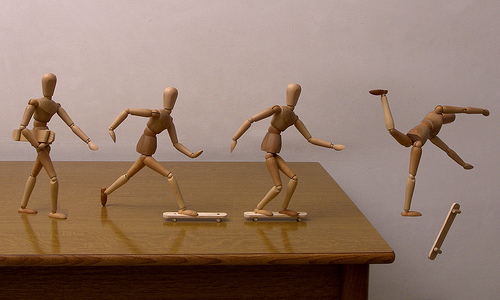
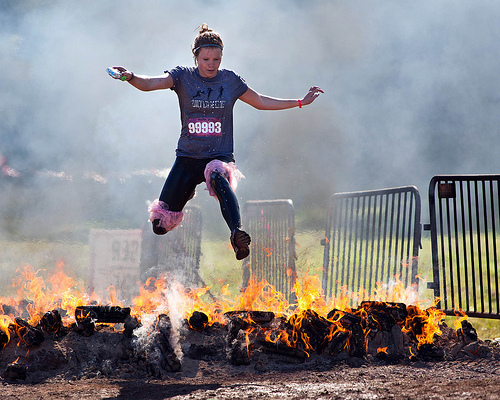
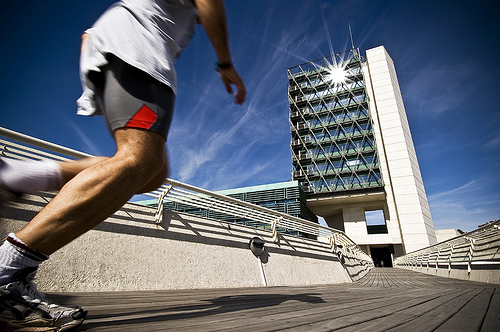
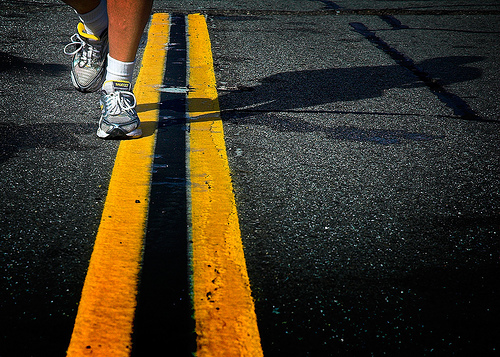

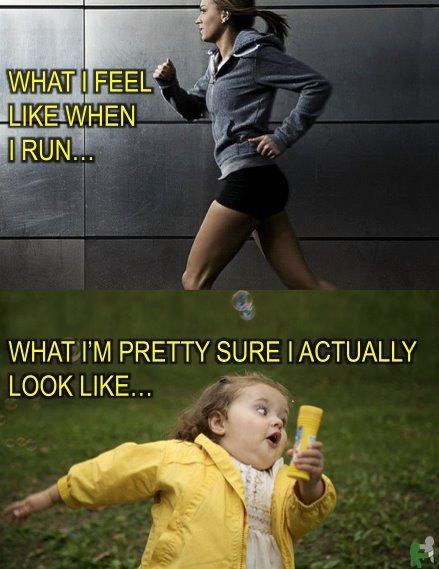

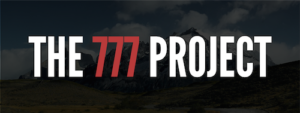
Great article! I completely agree with the 5 mile rule. I tell all of my new runner friends who are stuck around 3 and still not loving it yet the same thing.
Great post . . . lots of useful info. I’m not a big runner but I like that you mentioned stretching/foam rolling. Prevention never hurts. I’ve had an achilles problem off and on and stretching/foam rolling the calf muscle really helps. Also, the foam roller got too squishy and I ended up buying a short piece of PVC pipe at a hardware store. It’s about 2 feet long and 3 inches in diameter. Can’t remember where I got the idea but it’s solid plastic and it will never get squishy! Doesn’t take much body weight to really put pressure on muscles/knots.
Great article! One of the things I’ve always recommended to beginning runners is to use a tracking service like MapMyRun, MyFitnesPal, or Fitocracy.
It can be helpful to be a part of a community of similar minded runners. Ask lots of questions- most runners will be happy to talk about running.
-David